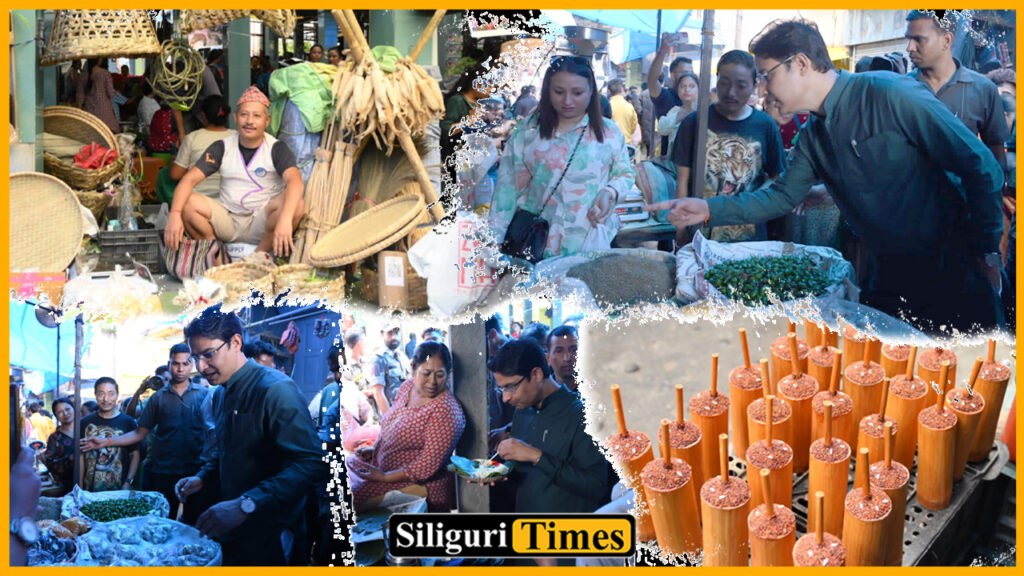MP Raju Bista visited the ‘Bihibarey Bazar’ at Kalimpong Haat Bazar and lauded it as a remarkable example of the “Vocal for Local” initiative envisioned by Prime Minister Narendra Modi. Recognizing Kalimpong and its surrounding areas as the ‘food bowl’ of the hill region, Bista emphasized their pivotal role in agriculture, horticulture, floriculture, spices, fruits, and dairy production. He highlighted the significance of the weekly ‘haat bazar’ (local market) in regulating the regional economy.
Traditionally, the haat bazar served as a central marketplace where people from remote villages would gather to sell their fresh farm products, handloom and handicraft items. The money earned from these transactions was then used to purchase daily essentials, thereby sustaining the local economy for generations.
However, over time, the nature of the haat bazar changed. Local vendors were gradually replaced, and inexpensive Chinese goods flooded the market, displacing local handicrafts and handloom products. Additionally, vegetables and fruits from the plains replaced locally grown produce. Consequently, the funds that once circulated within the region started to drain away, impacting the local economy and society. The lack of a market for local products discouraged increased production, leading to fallow fields and a shift of farming families to urban areas in search of easier livelihoods.
This shift in dynamics disrupted rural villages, resulting in broken families and a decrease in population. Opportunistic land mafias took advantage of the situation, purchasing land at extremely low prices and subsequently constructing hotels, homestays, and housing societies.
Bista expressed his appreciation for concerned citizens and organizations working diligently to revive the haat bazar and, in turn, the regional economy. He highlighted the importance of creating a market for local products, which would help revive the rural economy and retain economic control within the hills. The MP extended his support to this commendable initiative and offered collaboration with organizations and individuals interested in replicating the success of the Bihibarey Haat in other areas across the Darjeeling hills, Terai, and Dooars regions.

